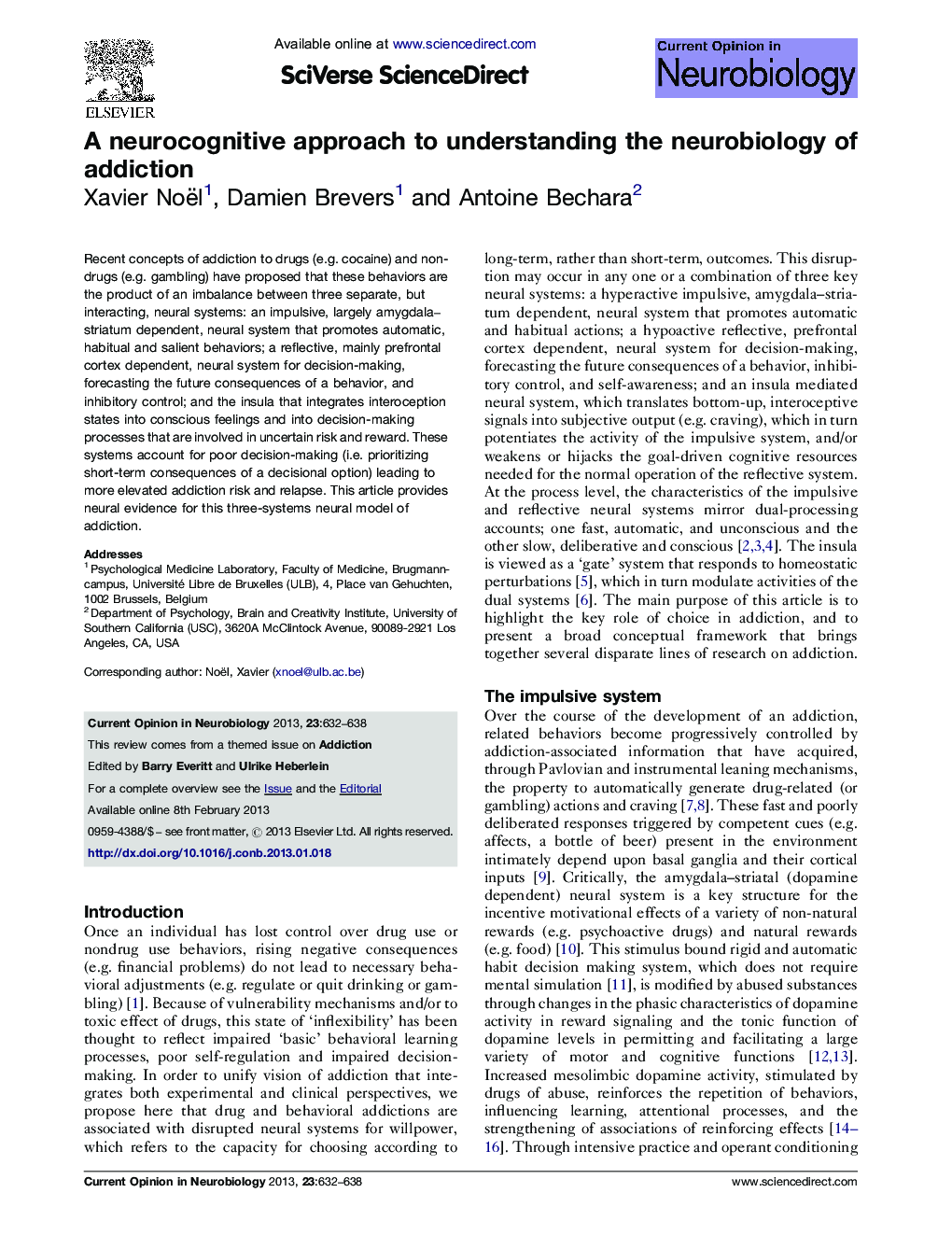| Article ID | Journal | Published Year | Pages | File Type |
|---|---|---|---|---|
| 6267126 | Current Opinion in Neurobiology | 2013 | 7 Pages |
Recent concepts of addiction to drugs (e.g. cocaine) and non-drugs (e.g. gambling) have proposed that these behaviors are the product of an imbalance between three separate, but interacting, neural systems: an impulsive, largely amygdala-striatum dependent, neural system that promotes automatic, habitual and salient behaviors; a reflective, mainly prefrontal cortex dependent, neural system for decision-making, forecasting the future consequences of a behavior, and inhibitory control; and the insula that integrates interoception states into conscious feelings and into decision-making processes that are involved in uncertain risk and reward. These systems account for poor decision-making (i.e. prioritizing short-term consequences of a decisional option) leading to more elevated addiction risk and relapse. This article provides neural evidence for this three-systems neural model of addiction.
⺠Impaired decision-making is a characteristic of addictive behaviors. ⺠Multiple neural systems drive addictive behaviors. ⺠The striatum, prefrontal cortex, and insula are key neural substrates. ⺠Addictive behaviors reflect an imbalance in activity within these key neural systems. ⺠The insula could be a key anatomical target for intervention to treat addiction.
